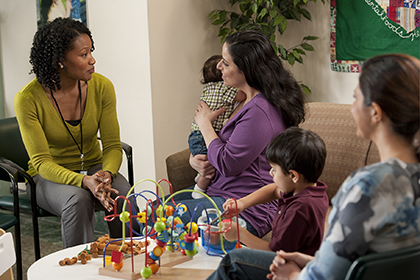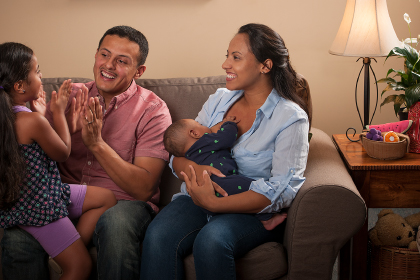HPRIL - BLOG
- About
- Programs
- Research and Practice
- Life Course Framework
- Child and Adolescent Health
- Women, Infants and Children Program (WIC)
- Early Childhood Services Research Program
- Faculty
- Maryland School Wellness Partnership
- Research and Practice
- Maternal, Fetal and Perinatal Health
- Population and Health
- Women's, Sexual and Reproductive Health
- Child and Adolescent Health
- Life Course Framework
- People
- News and Events
- Contact
- Make a Gift
Welcome to the HPRIL Blog!
This blog features the latest news about the Hopkins Participant Research Innovation Laboratory for Enhancing WIC Services (HPRIL) project as well as case studies, tools, and resources. The HPRIL project, funded through a cooperative agreement with the United States Department of Agriculture (USDA) Food and Nutrition Service (FNS) and led by a team of researchers and staff at the Johns Hopkins Bloomberg School of Public Health (JHSPH), explores the impact of innovations in WIC services at the local level. WIC—the Special Supplemental Nutrition Program for Women, Infants, and Children—is a USDA program that provides nutrition education, breastfeeding education and support, referrals to health care and social services, and healthy foods to over 6 million low-income pregnant and postpartum women, infants, and children up to age 5. HPRIL is focused primarily on innovations aimed at retaining children ages 1 to 4, as this group is at the greatest risk of early exit from the WIC program.
March 21, 2022 | Miami-Dade WIC Leverages Social Media to Respond to Infant Formula Recall
Authors: Carla Sabugo, Miami-Dade WIC, Elisabet Eppes, Johns Hopkins Bloomberg School of Public Health
On February 17, 2022, Abbott, one of the nation’s leading manufacturers of infant formula, announced the recall of a number of infant formulas including certain batches of Similac, Alimentum, and EleCare, due to likely bacterial contamination. The recall exacerbated an already existing nationwide formula shortage related to the COVID-19 pandemic.
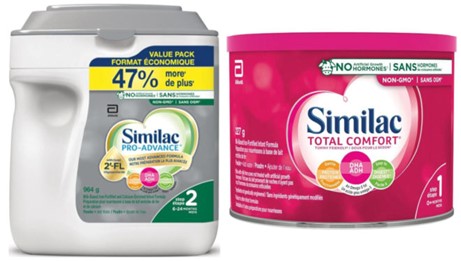
Photo source: https://www.foodsafetynews.com/2022/02/abbott-recalls-infant-formula-in-canada-as-outbreak-investigation-continues/.
In response to the recall, WIC agencies across the US mobilized to ensure that WIC participants were aware of which WIC-issued formulas had been recalled and were able to access safe alternatives. The Florida Department of Health Miami-Dade WIC program, a subgrantee of the HPRIL project, leveraged their experience with social media and the digital infrastructure built with support from HPRIL to rapidly spread the message about the recall.
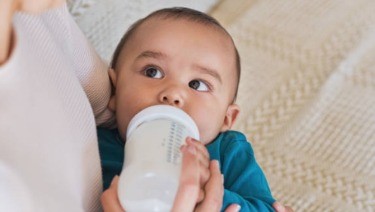
Photo source: https://www.healthychildren.org/English/ages-stages/baby/formula-feeding/Pages/Amount-and-Schedule-of-Formula-Feedings.aspx
On the morning of Friday, February 18, the Miami-Dade WIC administration called an emergency meeting to discuss how the agency would respond to the recall. The team discussed how the recall would impact the agency’s operations, including—but not limited to—increased call volume and foot traffic, a sudden need for appointments to request a different infant formula, and logistical complications related to the return of recalled formula. The team formulated a communications plan for both internal staff as well as WIC participants. The message for WIC participants needed to include information about which formulas were recalled as well as clear instructions on how to obtain a replacement formula as soon as possible.
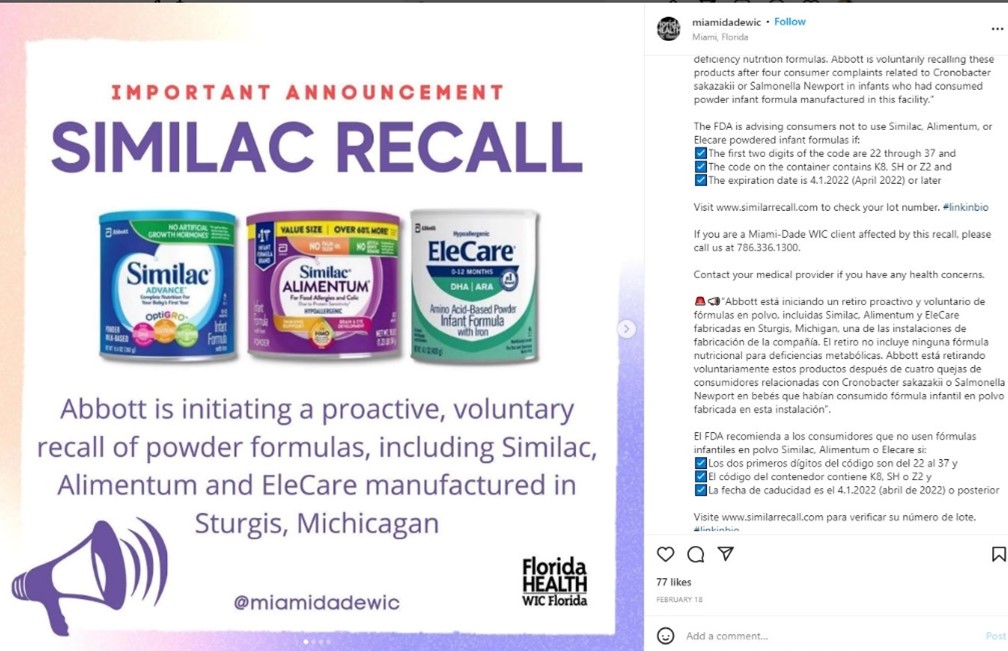
The Miami-Dade HPRIL team knew that they could leverage their Facebook and Instagram accounts to notify the public about the recall and provide instructions for participants to call the WIC office for more information and assistance. These official social media accounts were developed and approved as part of the HPRIL project as innovative tools to promote retention among children in the WIC Program.
Using the hashtags #recall, #similacrecall, and #formularecall and official press releases, the team reviewed and gathered existing content and used it to develop a four-part custom social media post with information about the recall, how to check if cans are affected, instructions on what to do if one’s formula is impacted, and contact information for Miami-Dade WIC. The draft post was reviewed and approved by the Miami-Dade WIC director by 12pm on February 18.
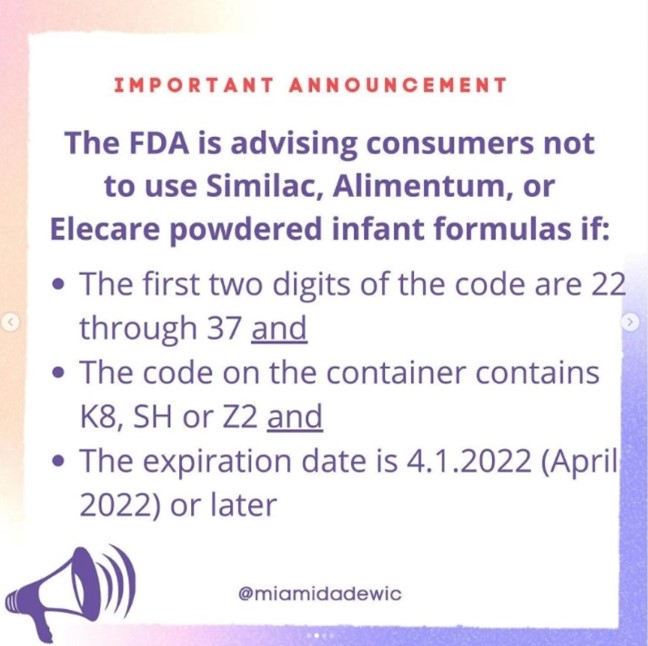
By 12:30 pm, the post was uploaded to the Miami-Dade WIC official Instagram and Facebook accounts. The use of an official Instagram and Facebook account proved not only effective in terms of timely communication to WIC participants about this urgent issue, but also served as a catalyst to quickly spread accurate information to partner organizations and the general public. At the time that Miami-Dade WIC shared their post, no other major WIC agencies or nonprofit organizations had posted information about the recall on Facebook or Instagram. Within five hours of uploading, the Instagram post had reached close to 450 social media accounts and had been shared 200 times.
Between February 18 and 22, the social media post was shared over 800 times and reached over 2,000 Instagram accounts. This was a record for any organic* post Miami-Dade WIC had shared since opening the accounts. It is clear that Miami-Dade WIC was at the forefront of communicating crucial information about the infant formula recall and ensuring that caregivers had the knowledge and support needed to provide safe formula to their infants. The knowledge and experience gained from the HPRIL project directly led to the team’s effective social media response.
* In this case, organic means a post that is free (i.e., not a paid advertisement).
Source for Similac images: https://www.instagram.com/miamidadewic/
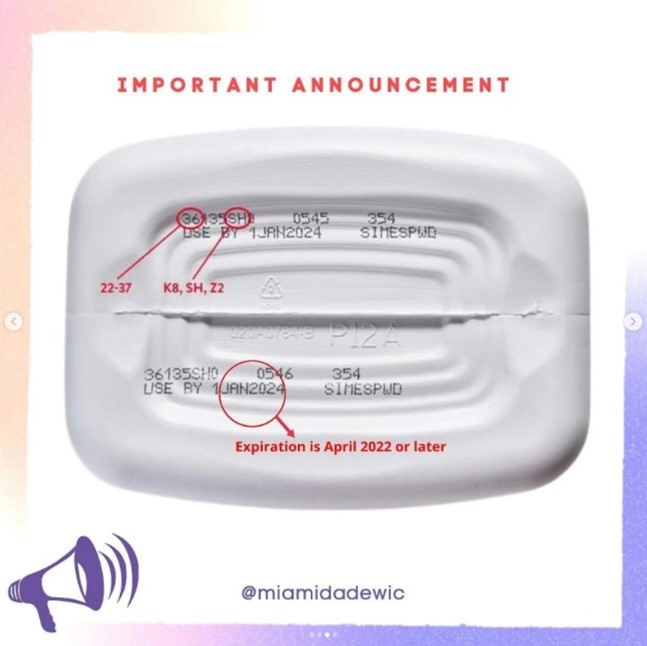
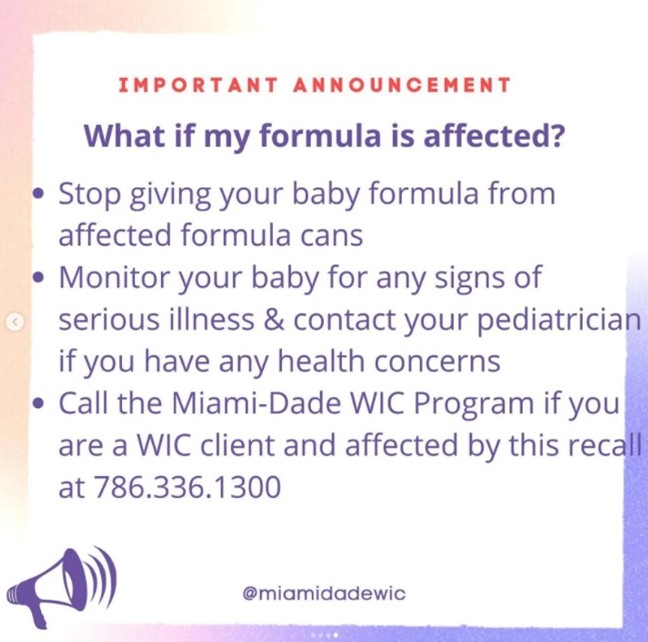
August 9, 2021 | WICBuzz in the Time of Texting
Author: Jennifer Chancay, MS, IBCLC, Program Manager, Community Nutrition Programs, Pima County Health Department
In 2021, it is increasingly difficult to connect with others by phone, as each individual’s communication preferences and ability to screen for telemarketers and ‘robocalls’ often results in avoidance of calls from unrecognized numbers. For agencies like WIC, this can present a real obstacle in engaging with clients and keeping them active in the program. ‘Nontraditional’ forms of outreach like text messaging present an opportunity for WIC agencies to capitalize on an existing and widely available medium (the cell phone) and explore other forms of interaction to achieve these same programmatic goals.
When given the opportunity, through the HPRIL grant, to develop an innovative tool to increase child retention in WIC, the Pima County Health Department WIC team, along with our State WIC consultant, wanted to see how we could use a drip marketing texting campaign to communicate with our clients. We thought we could use a texting platform to inform both English and Spanish-speaking clients about the WIC program, WIC foods and community resources and in doing so, add value to the clients’ WIC experience. We named the campaign ‘WICBuzz.’
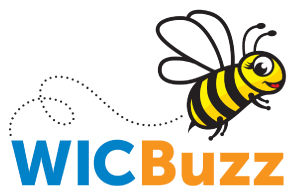
A drip marketing campaign involves pre-programming text messages to send to a group of people on a given date and time. Once the messages have been developed and programmed (meaning assigned to whom and when the messages will be sent), the texting platform sends the texts out automatically. It’s a relatively fast, low-cost way to put WIC information into the palm of your client’s hand.
The WICBuzz intervention began on March 7, 2020 when Pima County WIC opted 5,700 families into the drip marketing campaign with this welcome message:

Once enrolled, clients received a monthly general WIC message as well as monthly age-specific messages for infants, one-year-olds and children two to five. A guardian with a child in each of these age categories would receive a maximum of four texts per month. Like many WIC agencies, Pima County saw a surge in new enrollments as well as re-enrollment of children into the program with the onset of the COVID-19 pandemic. Pima County added a group of 1,001 additional families that enrolled in WIC after the start of the intervention to the WICBuzz campaign on November 30, 2020.
With each message received the recipient is told they can “Reply ‘stop’ to receive no more messages”, and by law, if they opt-out of the intervention by replying “stop,” we can no longer reach out to them by text. A key to our success was to make sure that our messages resonated with our client population. Our success depended on the quality and perceived usefulness of our messages.
To measure how much our clients liked our messages, we tracked how many participants opted-out after receiving each message. Over the course of the 12-month intervention, 21% of those enrolled in WICBuzz ultimately chose to stop participating. We also measured the number of clients that clicked on the links present in our messages and asked clients to “like” our messages.
|
QUARTER |
NUMBER OF MESSAGES SENT |
|---|---|
FY 2020 Q2 |
17, 735 |
FY 2020 Q3 |
32,396 |
FY 2020 Q4 |
37,194 |
FY 2021 Q1 |
39,622 |
FY 2021 Q2 |
26,852 |
TOTAL |
153,799 |
Over the course of the 12-month intervention, WICBuzz sent a total of 153,799 messages (see chart). In order to get more information on the types of messages that resonated most with our clients and prompted them to action, we sent out mid-intervention and post-intervention surveys to our clients. In the surveys, which were available in both English and Spanish, we asked clients to tell us more about the types of messages they found helpful, how often and what time of day they would like to receive them, other topics they would like to learn more about and what actions the texts prompted them to take. Below you can see the actions that the respondents to the post-intervention survey (n=1,565) reported taking in the past year due to encouragement from WICBuzz.

While we are still in the process of analyzing the data that we have collected and making adjustments to WICBuzz, we hope our investment in message development and evaluation, along with the critical resources and support we received from HPRIL, will enable other WIC programs around the country to benefit from our experiences and this valuable tool.
July 9, 2021 | Bringing WIC to You: Yavapai County Introduces “WIC in a Click”
Author: Carrie Wright, Section Manager, Nutrition and Breastfeeding Services, Yavapai County Community Health Services
The Yavapai County Special Supplemental Nutrition Program for Women, Infants, and Children (WIC) is making learning about healthy eating habits more accessible through telenutrition. Telenutrition is defined by the Academy of Nutrition and Dietetics as the “interactive use of electronic information and telecommunication technologies to implement the Nutrition Care Process with patients and clients at a remote location”. Yavapai County WIC received funding through the HPRIL project and implemented a telenutrition platform called WIC in a Click.
WIC in a Click allows WIC clients to participate in follow-up appointments in the comfort of their home, on a break at work, or anywhere they have access to a phone or computer. This new way of serving clients was a necessary step to take to increase retention of children in our program, which like many WIC programs nationwide has seen a steady decline in recent years. Additionally, the timing of WIC in a Click was opportune, with the implementation being only two months before the onset of the COVID-19 pandemic.
Unlike other telenutrition platforms offered in the state of Arizona, WIC in a Click was designed to offer on-demand (within one hour) appointments. Initially, WIC clients were offered only video-conferencing appointments to be done on-demand, but phone appointments were quickly added due to the high demand that came with the onset of the COVID-19 pandemic.
We discovered phone appointments were the preferred method by both WIC clients and WIC staff as indicated by a SurveyMonkey survey given after each appointment. Additionally, we found phone appointments made it easier and quicker for clients to connect with a WIC worker to get the services they needed. Many clients are directly transferred to a WIC worker the moment they call in, making their wait time for WIC services less than 5 minutes. Phone appointments proved to be even more beneficial for clients who had no or bad internet connection.
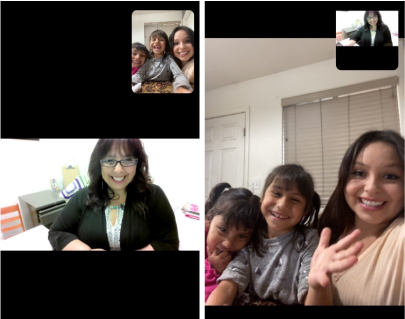
Overall, WIC in a Click has been well-received by both WIC staff and WIC clients as indicated by the comments below.
WIC Staff say:
“I think this was great program, without knowing we were prepared to serve clients during the pandemic.”
“This program has been useful for clients who have busy schedules because they are able to get their appointments right away.”
“Many clients appreciate not having to come to the office for every single appointment.”
“Most of the clients I talked to appreciate not having to come in the office and would like to continue with phone or Zoom appointments. I have a foster mom that has 2 foster children and 5 of her own, and she has said to me many times how nice virtual appointments are so that she does not have to try to load up all her kids to come to WIC or to have to find someone to watch them. So even though she lives close and the distance to get to the office is not a barrier, the time it takes to come to an appointment can be a barrier.”
WIC Clients say:
“The lady that has been doing televisits is great! I can’t think of her name but wish I could be because she is awesome.”
“Fantastic program, everyone is so helpful.”
“Love the phone appointments!”
“I appreciate the phone call interviews.”
“Quick and easy to get the approval for benefits and friendly and helpful.”
Everyone deserves the opportunity to thrive, and WIC offers the support to help each family with individual goals. To meet the demands of today’s busy lifestyle, WIC in a Click provides a unique option for families to receive services, support, and health education. Through telenutrition services, we minimize the hardships of time spent driving, expense of gas and save time for our families to do what is most important, to be a family.
June 15-17, 2021 | HPRIL Featured at National WIC Technology Conference
The Special Supplemental Nutrition Program for Women, Infants, and Children (WIC) provides healthy food, nutrition education, breastfeeding support, and referral services to income-qualified pregnant women, postpartum mothers, infants, and children up to age five. Over six million women and children receive WIC services each month through nearly 10,000 clinics nationwide [USDA Food and Nutrition Service 2021. WIC Data Tables. https://www.fns.usda.gov/pd/wic-program]. WIC has been extensively evaluated and is considered to be one of the nation’s most successful nutrition programs [USDA Food and Nutrition Service (2013). How WIC Helps. https://www.fns.usda.gov/wic/about-wic-how-wic-helps].
Despite the need for the program and demonstrated effectiveness, WIC has struggled in recent years to retain participants, particularly for children 1-4 years [Oliveira, V. and Frazão, E. (2015). The WIC Program: Background, Trends, and Economic Issues, 2015 Edition, EIB-134, U.S. Department of Agriculture, Economic Research Service]. Research suggests many barriers to participation, including burdensome certification requirements, lack of transportation, long clinic wait times, and a lack of knowledge about program eligibility [National Academies of Sciences, Engineering, and Medicine (NASEM) (2017). Review of WIC Food Packages: Improving Balance and Choice: Final Report. NASEM; Health and Medicine Division; Food and Nutrition Board; Committee to Review WIC Food Packages. Washington, DC: National Academies Press]. To streamline the program and make it easier to participate, WIC has adopted many innovative technologies in recent years. These include electronic benefit transfer (EBT) cards (which have replaced paper vouchers), online nutrition education, videoconferencing, online appointment scheduling, and smartphone apps. Although many of these technologies have existed in WIC for many years, there is not a large amount of evidence demonstrating their effectiveness at retaining participants in the program.
The Hopkins Participant Research Innovation Laboratory for Enhancing WIC Services (HPRIL) project, which began in 2018, aims to fill this research gap by working with local WIC agencies to test the impact of particular innovations on improving enrollment as well as child retention. The five local WIC agencies competitively selected and funded through HPRIL all tested innovations with a digital technology component. These include:
- A drip marketing text messaging campaign at Pima County WIC in Arizona
- An on-demand video call tool at Yavapai County WIC in Arizona
- An integrated media marketing campaign at Miami-Dade County WIC in Florida
- An online scheduling tool at Cabarrus Health Alliance in North Carolina
- A closed loop digital referral system at Public Health Solutions in New York
In October 2021, the HPRIL team at JHSPH along with colleagues from the funded WIC agencies were selected to present at the National WIC Association’s Virtual WIC Technology, Program Integrity, and Vendor Management Conference, which showcases the latest WIC technological innovations. Over 1,000 stakeholders attended the conference, including representatives from the USDA Food and Nutrition Service, state and local WIC agencies, technology vendors, and researchers.
HPRIL affiliates presented during three concurrent sessions at the conference. The HPRIL coordinator at Cabarrus Health Alliance (CHA) WIC presented An Innovative Online Appointment System to Enhance WIC Services and described the software, how they marketed it to participants, preliminary results of their process evaluation, and possible barriers to uptake. Representatives from Pima County WIC presented WICBuzz in the Time of Texting, a session that described the WICBuzz innovation and explained how the evaluation of the project has incorporated a variety of available technologies to obtain stakeholder feedback and make real-time adjustments throughout the project lifecycle.
In the final HPRIL session, Susan Gross, Associate Scientist in the Department of Population, Family, and Reproductive Health and an HPRIL co-investigator, along with representatives from Pima County, Yavapai County, and Public Health Solutions, presented Local Agencies Launch Technology Innovations to Enhance the WIC Participant Experience. The local agency speakers described their HPRIL innovations, lessons learned, and results of their process evaluations, while Dr. Gross discussed the overall HPRIL evaluation and what the HPRIL team has learned so far from studying the local agency participation data.
The HPRIL team will share the findings of the cross-project evaluation next year which will describe the effectiveness of these technologies at retaining children in the program.
June 7, 2021 | Using Google to Understand the WIC Customer Journey and Increase Online Engagement
Authors: Eriko Robinson, Public health Nutrition Program Director, Carol Crisafi, Breastfeeding Peer Counselor, and Carla Sabugo, Director, Outreach and Innovation, Miami-Dade WIC Program
According to Pew Research (2021), 85% of US adults go online daily. On average, users spend 6 hours and 30 minutes online each day. Statistics show that much of this time is spent on Google. According to recent estimates, 3.5 billion searches take place on Google every single day. What exactly are these users searching online, and how can WIC use this information to better understand the customer journey and increase online engagement? Miami-Dade WIC’s funded HPRIL project aimed to do just this, utilizing the power of digital media and Google to manage our online presence and connect with current and future WIC participants to influence retention and enrollment.
Like many WIC programs nationwide, Miami-Dade WIC struggled to retain children in our program in the past few years. Traditional outreach methods such as health fairs and community events were often the only outlet to reach our client population. However, these methods usually proved ineffective (limited audience and targeting, labor intensive, no data on return on investment). In March 2020, Miami-Dade WIC launched the use of Google Analytics to track our local agency website activity and monitor customer acquisition and behavior. Done in conjunction with a 12-month integrated media marketing campaign which included the use of Google Ads in 7 targeted zip codes, the detailed data from Google Analytics has helped us improve our marketing, better serve our WIC community, and ultimately drive more customers and visitors to our website.
- Since the start of our campaign, the Miami-Dade WIC website had 30,934 visitors to our website. Of those, 77.7% were new visitors (never visited our website in the past). In contrast, during the same time frame the year prior, there were only 2,461 visitors to our website.
- A steep incline in website visits was seen between March 2020 and July 2020 (517% increase). This correlates with the initial COVID pandemic response where we saw increased interest in our program due to the economic crisis.
- An average of 2.84 pages per session were viewed along with a bounce rate of 53.58%, indicating that users not only stayed on our website, but also interacted with various pages during their visit.

Figure 1. Total Users to Miami-Dade WIC Website by Month, March 2020-May2021
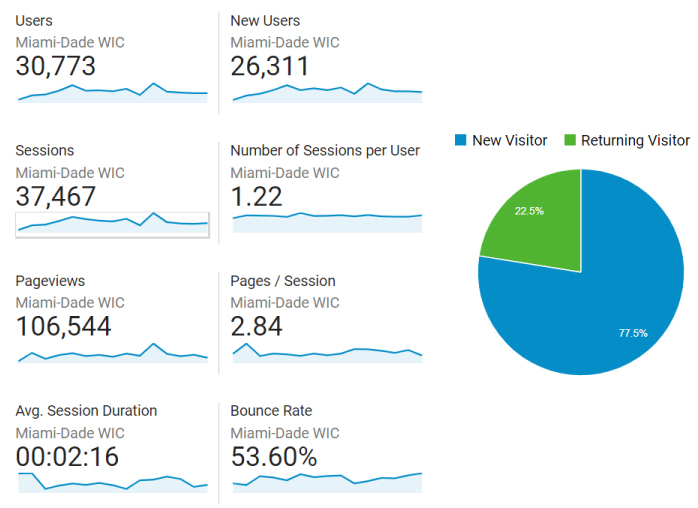
Figure 2. Select Google Analytics Metrics for Miami-Dade WIC Website, March 2020 – May 2021
- Most users are accessing our website in English (76.88%). However, 21.02% of visitors are using browsers in Spanish. This accurately reflects our large Hispanic population.
- 61% of users were between the ages of 18-34.
- 73.27% of all users during the project timeframe accessed the Miami-Dade WIC website from their mobile phone.
- The majority of users (38.28%) during the campaign were driven to our website via organic google searches. For example, they search using the keyword “WIC” and the closest WIC site automatically and organically pops up at the top of their search query. However, almost 23% of visitors (representing almost 8,000 users) were driven to our website by our paid search or social media advertising campaign (“cpc” is “cost per click” and indicates paid advertising). Again, advertisements were only sent to 7 targeted zip codes in Miami-Dade for the purpose of the study and reflect this small subset of our community.
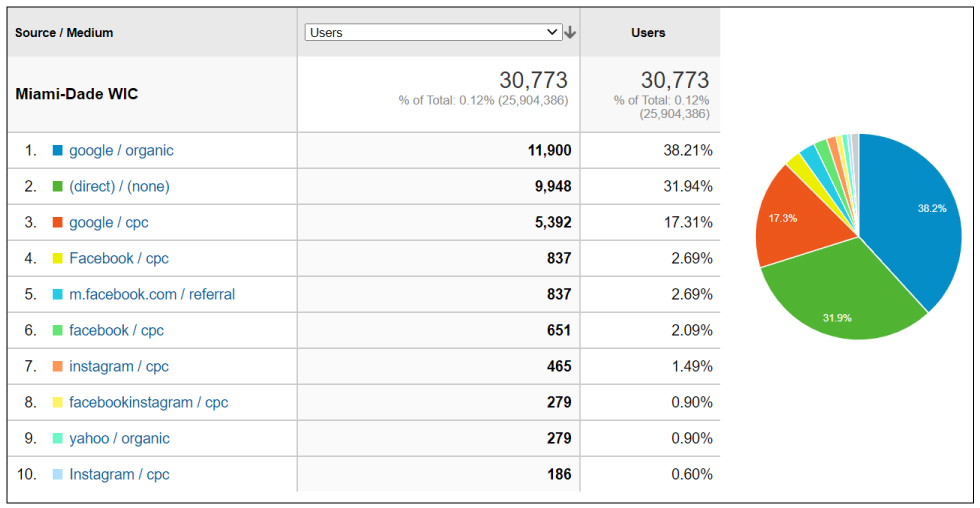
Figure 3. Acquisition of Visitors to the Miami-Dade WIC Website by Source and Medium, March 2020 – May 2021
Reference
Pew Research Center (2021). More than eight-in-ten US adults go online at least daily. https://www.pewresearch.org/fact-tank/2021/03/26/about-three-in-ten-u-s-adults-say-they-are-almost-constantly-online/ft_2021-03-26_alwaysonline_01/.
May 19, 2021 | What Matters to You: A Tool for A Deeper Conversation
Authors: Soalihin Fatema, Quality and Evaluation Coordinator, and Lauren Haynes, Director, Quality and Evaluation, Neighborhood Health, Public Health Solutions
Local agency staff play a vital role in assessing WIC participants’ need for services outside of WIC and helping them address those identified needs through referrals. Public Health Solutions (PHS)’ HPRIL-funded innovation, What Matters to You, wanted to leverage the referral process to enhance participants’ real and perceived value of WIC as a strategy for WIC retention. The project aims to use a participant centric approach to identify participant’s highest priority needs when their children are at the key developmental milestones where they are most at-risk of not recertifying and then address those identified needs through closed-loop referrals to a coordinated, accountable network of community partners using a dynamic referral platform, Unite NYC.
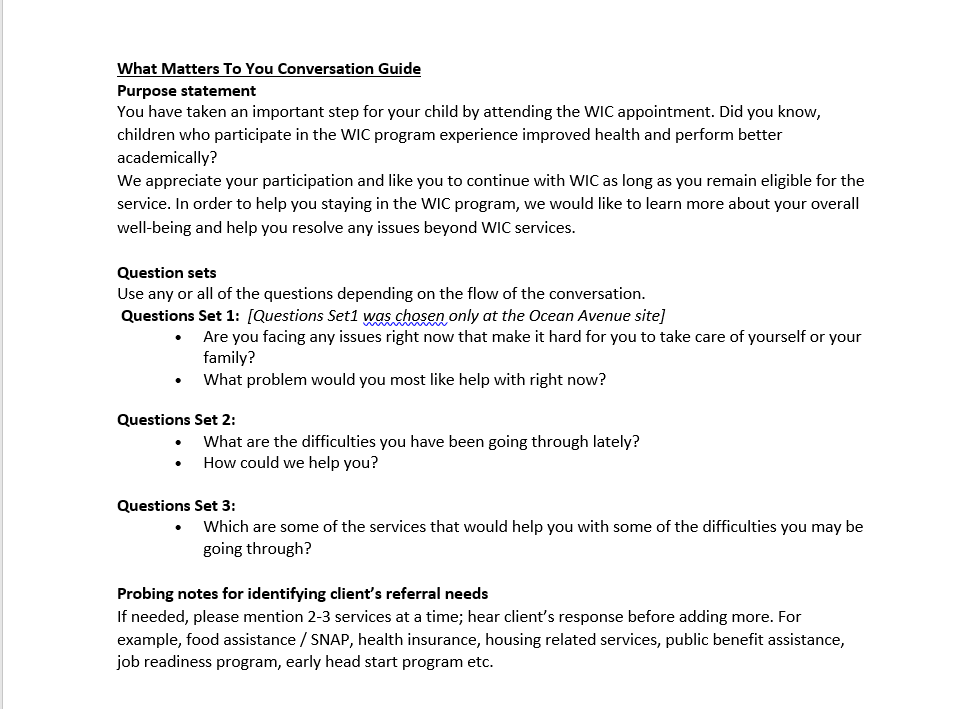
The ‘What Matters To You’ (WMTY) conversation, a participant-centered approach, was the innovative tool that PHS applied to identify participants’ highest priority needs. We adapted the Institute of Healthcare Improvement’s What Matters to You approach (The Power of Four Words: "What Matters to You?" | IHI - Institute for Healthcare Improvement) to develop our own conversation guide. In consultation with the WIC team, we developed a conversation guide that is culturally sensitive and linguistically appropriate for our WIC participants. For example, in the site where participants are predominantly Spanish speaking, staff were cautious about asking participants about their problems directly, as they feared participants might feel interrogated or offended. Staff suggested simple opening questions so the conversation could flow naturally. Through an iterative process of field-testing and feedback, the conversation guide was finalized. Ultimately, it contained a purpose statement and three sets of open-ended questions as a conversation starter. In addition, the conversation guide was supplemented with an updated list of referral resources. Depending on the participant’s context, staff were instructed to use some or all of the questions to engage participants in the needs assessment conversation.
WMTY and Unite NYC were adopted at two clinic sites within the PHS network, while one clinic site served as the comparison. Use of the conversation guide over a 12-month period provided us with insights about different aspects of needs assessment:
-

-

- The conversation helped reveal latent referral needs: Many participants were unaware of the services that are available in their community or not sure about their eligibility for public benefit assistance. This targeted conversation provided a way for many participants to share their concerns and seek more information about their eligibility for needed services.
- Pro-referral environment could increase referral volume: There was a greater increase in the volume of referrals made at the intervention sites, where WMTY conversations occurred, than the comparison site. Perhaps the year-round discussion about the conversation and referrals at the project sites was a contributing factor.
-

May 6, 2021 | Cabarrus Health Alliance Recognized by NC GlaxoSmithKline Foundation for Online Booking System
Author: Pady Doroodchi, Program Coordinator, HPRIL-WIC, Cabarrus Health Alliance
The Hopkins/USDA Participant Research Innovation Laboratory for Enhancing WIC Services (HPRIL) has provided Cabarrus Health Alliance (CHA) WIC Services, located in Cabarrus County, North Carolina, with an opportunity to implement an innovative appointment booking system for WIC participants. This allows participants to make their appointments outside of regular business hours. During COVID-19, CHA has adapted to a telehealth model and the appointment system, known as QLESS, has enabled families to book online.
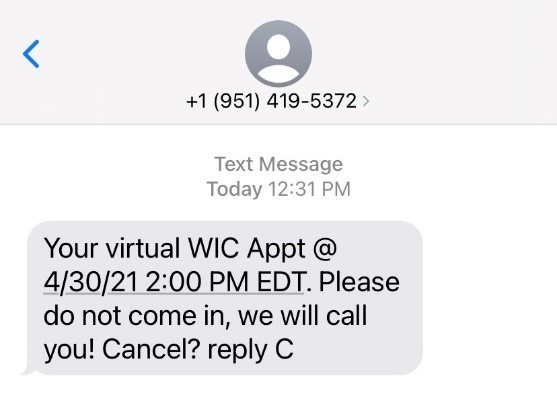
An example of what participants receive via text message confirming their appointment at CHA-WIC.
This grant funded project has been recognized by the North Carolina GlaxoSmithKline Foundation Awards. The recognition awarded Cabarrus Health Alliance WIC services with $10,000 to use for participant services. In order to put the monetary award to the best use, CHA has purchased an additional year with a new scheduling software, Flexbooker. The rollout date for Flexbooker will be on June 1, 2021. This will provide uninterrupted service for WIC participants to book their appointments online.
QLESS has been a sufficient appointment system platform; its ability to queue and provide in lobby wait times was one of the main qualifications for choosing the system. However, due to the COVID-19 pandemic, CHA-WIC halted serving WIC participants in-person and transitioned to over-the-phone appointments for the safety of WIC families and staff. Consequently, the wait time feature was not used for the duration of the project period due to COVID-19 precautions. During the process evaluation with HPRIL, the CHA team determined that QLESS may not be the best fit for a WIC clinic. The leadership team at CHA-WIC agreed and decided to modify priorities focusing on the online appointment platform rather than a queuing system that has the capability to make appointments.
We are excited to test out Flexbooker, which has additional functionalities when compared to QLESS. Flexbooker lets CHA-WIC staff adjust appointment types, times, text messages for certain appointments, and obtain data pertinent to the longevity of the online appointment system.
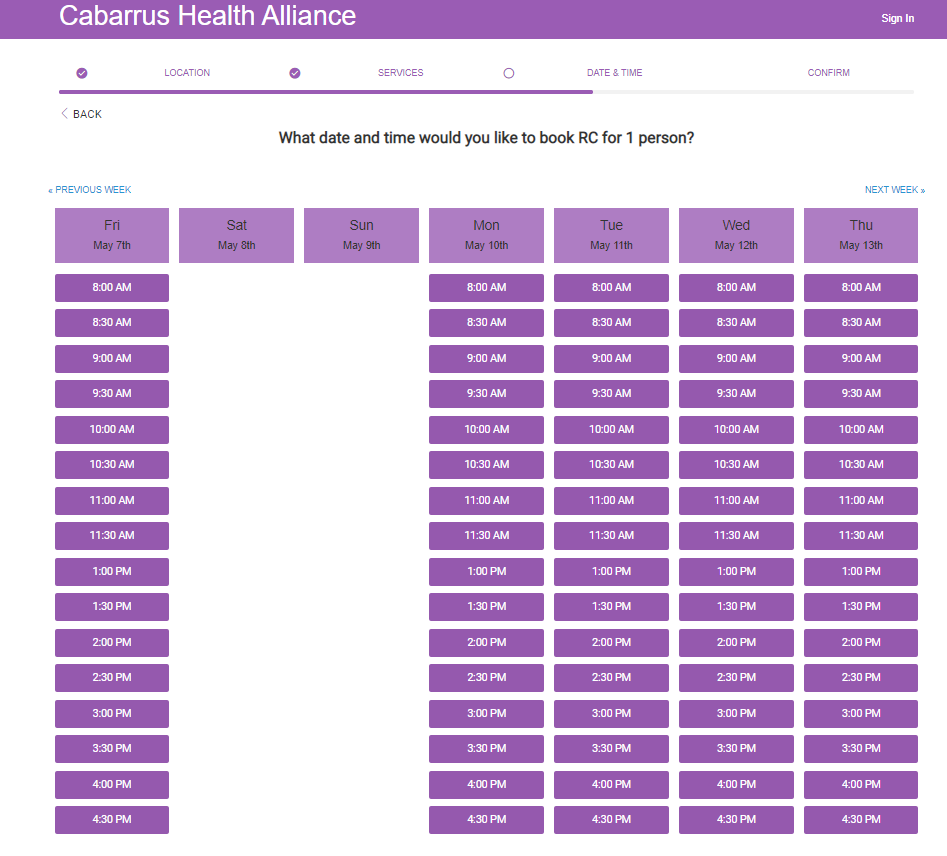
A snapshot of what participants will see in the new system, Flexbooker. The rollout date is June 1, 2021.
Overall, the online appointment system has been a chance for our CHA-WIC to serve more families. The HPRIL team has been instrumental in their assistance with the implementation of the scheduling tool. Their efforts will continue during the project evaluation to further understand the effects QLESS had on participant retention. CHA continues to have positive feedback regarding the online appointment system and hopes to grow the utilization of the system in the next year. Cabarrus Health Alliance is appreciative of the opportunity HPRIL has provided during this project period.
March 26, 2021 | Student Spotlight: Paris Lowe
Author: Paris Lowe, MSPH Candidate 2021 and HPRIL Intern
Paris Lowe is currently a second year Master of Science in Public Health (MSPH) student in the Johns Hopkins University Bloomberg School of Public Health Population, Family and Reproductive Health Department. For her field placement experience, she decided to work with us on the HPRIL project. This was an intriguing project for her given that she became a WIC baby in 1996. A young child raised by a single mother, she benefitted from all that the WIC program had to offer including her mother’s support with prolonged breastfeeding and consistent access to healthy foods. Recently, she had the opportunity to participate in Maryland's WIC campaign titled, "I'm a WIC Baby." The campaign not only gave her a chance to share childhood stories and the role of the WIC program during that time in her life, but also gave her a chance for her campaign picture to be featured around Baltimore City (see picture below).
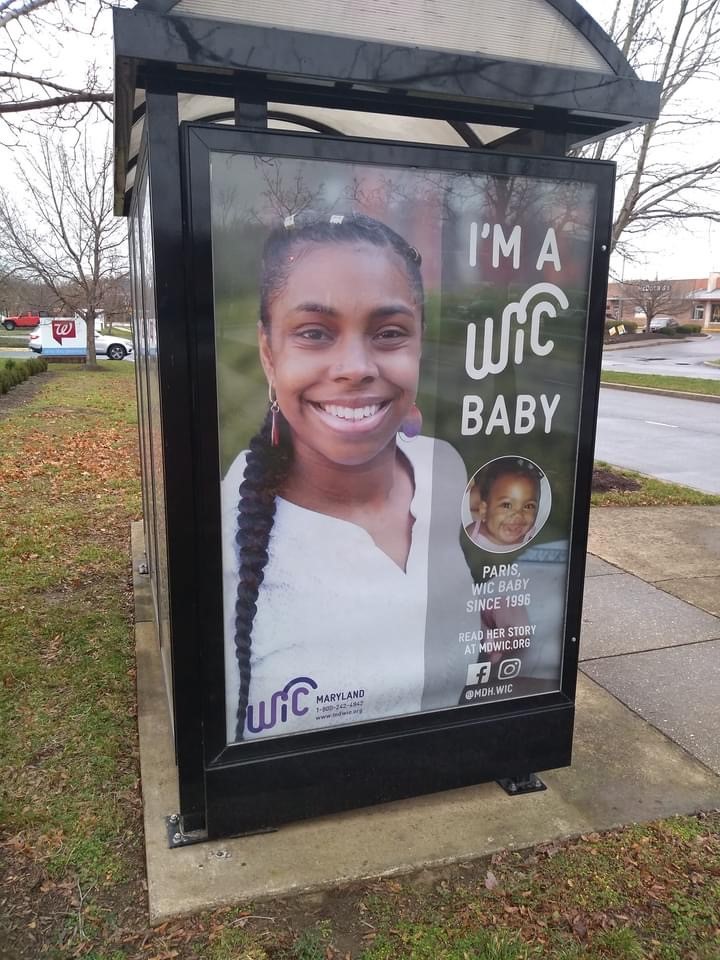
As she got older, her appreciation for the WIC program grew and so did her love for moms and babies. In college she pursued a degree in sociology focused on the family structure and the social determinants of health for communities of color. During her junior year of college, she became pregnant with her daughter and reenrolled in the WIC program now as a mother. Her daughter is three years old and currently still benefits from being enrolled in WIC.
When offered the opportunity to work on the HPRIL project, Paris was elated to finally give back to the WIC program. After seeing the positive impact of WIC firsthand as both a child and mother, she recognized the importance of research and innovation in improving how we serve our families. During her time on the project, she has been working on a literature review focused on how WIC programs can more effectively use digital marketing to communicate and serve their population. As this is approaching completion, she is excited to continue serving the WIC program in other ways throughout her career in public health.
March 4, 2021 | HPRIL Blog Launch: An Overview of Current Project Status
Author: Elisabet Eppes, Senior Research Program Manager, HPRIL
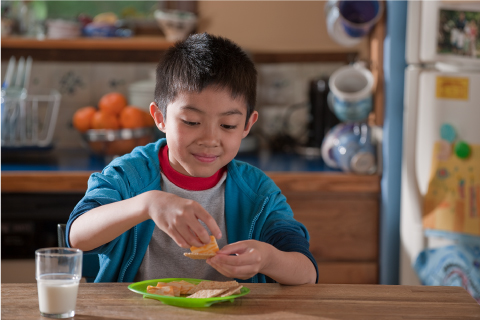
The Hopkins Participant Research Innovation Laboratory for Enhancing WIC Services project (HPRIL) explores the impact of innovations in WIC services at the local level. In 2019, HPRIL selected five local WIC agencies from across the US through a competitive application process to receive sub-grants. The local agencies are each implementing an innovative tool (i.e. a new clinical, management, or promotional campaign, process, or technology) aimed at improving the WIC participant experience and thereby keeping children on the program longer. Each innovative tool seeks to overcome one or more barriers to WIC participation and is uniquely suited to the local agency’s target population. To learn more about each of the innovative tools, please visit our Funded Projects page.
After first receiving funding in September 2019, the local agencies spent the latter part of 2019 identifying their primary areas of focus, honing their innovative tools, and developing project workplans. Implementation of the innovative tools began at various times from December 2019 through May 2020.

HPRIL subgrantees and JHSPH team at the Sept. 2019 Training and Technical Assistance Workshop in Baltimore
In March 2020, the COVID-19 crisis forced most of the local agency projects to pause or delay implementation. In addition, COVID-19-related changes to WIC operations, including the transition to remote services, required several agencies to modify their project design. However, despite these changes and the additional staff time required to respond to the pandemic, all five agencies successfully adapted their HPRIL projects and continued with implementation.
Throughout the implementation process, the HPRIL team at JHSPH has provided training and technical assistance to support the agencies and help them overcome unforeseen obstacles. HPRIL has also provided a platform for agencies to share their successes, challenges, and lessons learned and seek input from their peers.
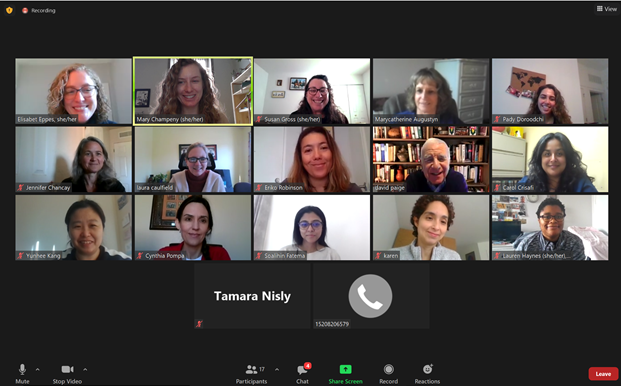
The HPRIL team hosts monthly collaborative innovation network (COIN) calls that feature trainings and peer sharing.
Now, the innovative tools have been successfully integrated into the WIC operations at each local agency, and the agencies are shifting their focus to evaluation, data analysis, and dissemination. Through their participation in HPRIL, the agencies have gained the knowledge and skills necessary to conduct their own project evaluations. The local evaluations explore such questions as whether the innovative tools were implemented as intended and to what degree implementation led to greater retention of children in the WIC program. These local agency evaluations will contribute to HPRIL’s broader cross-project evaluation.
We are excited to use this blog to share details about the innovations, lessons learned, promising practices, and tools and resources developed as part of the HPRIL project. Please stay tuned for those updates!
If you have any questions about our project, please reach out to hpril@jhu.edu.
